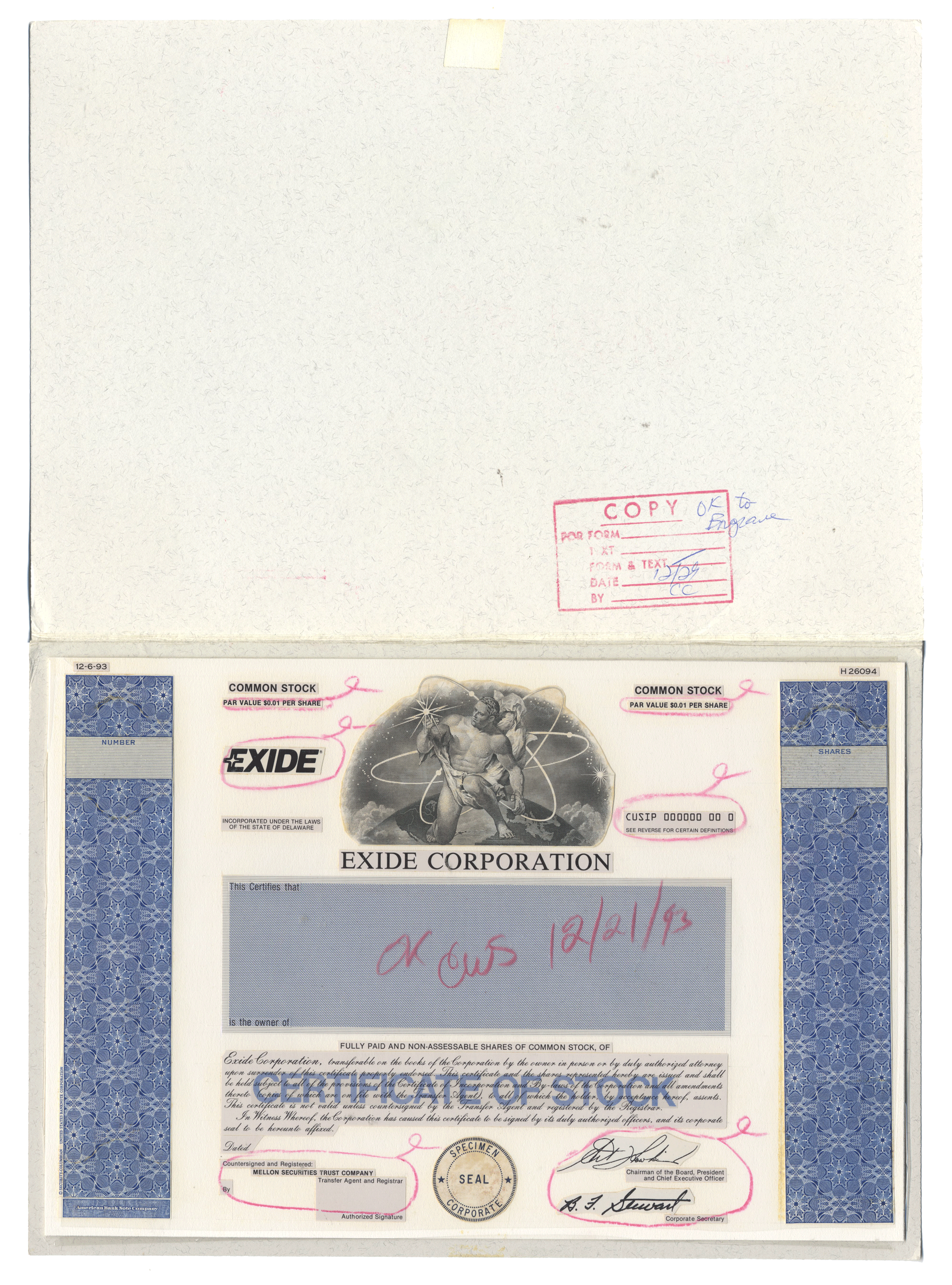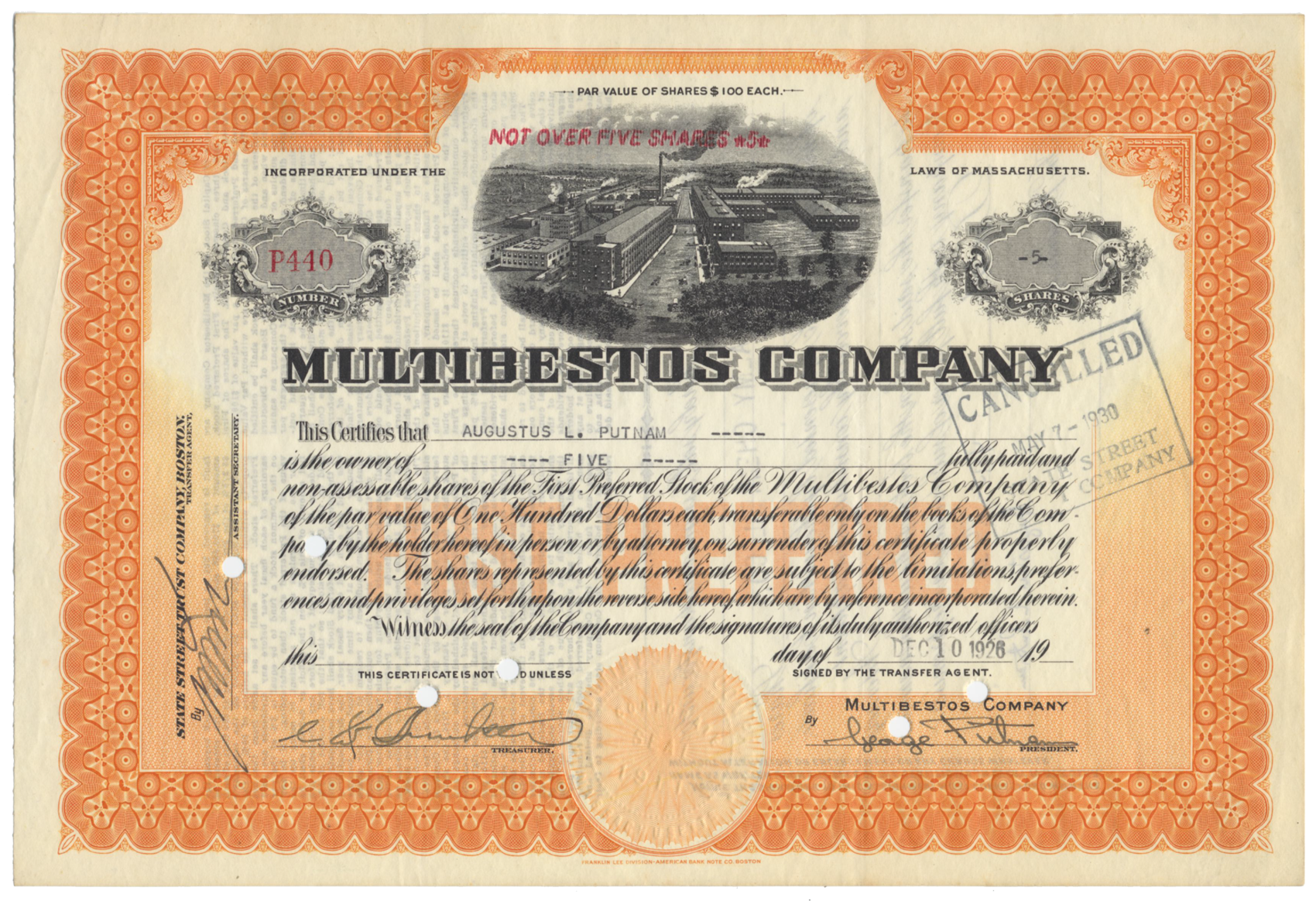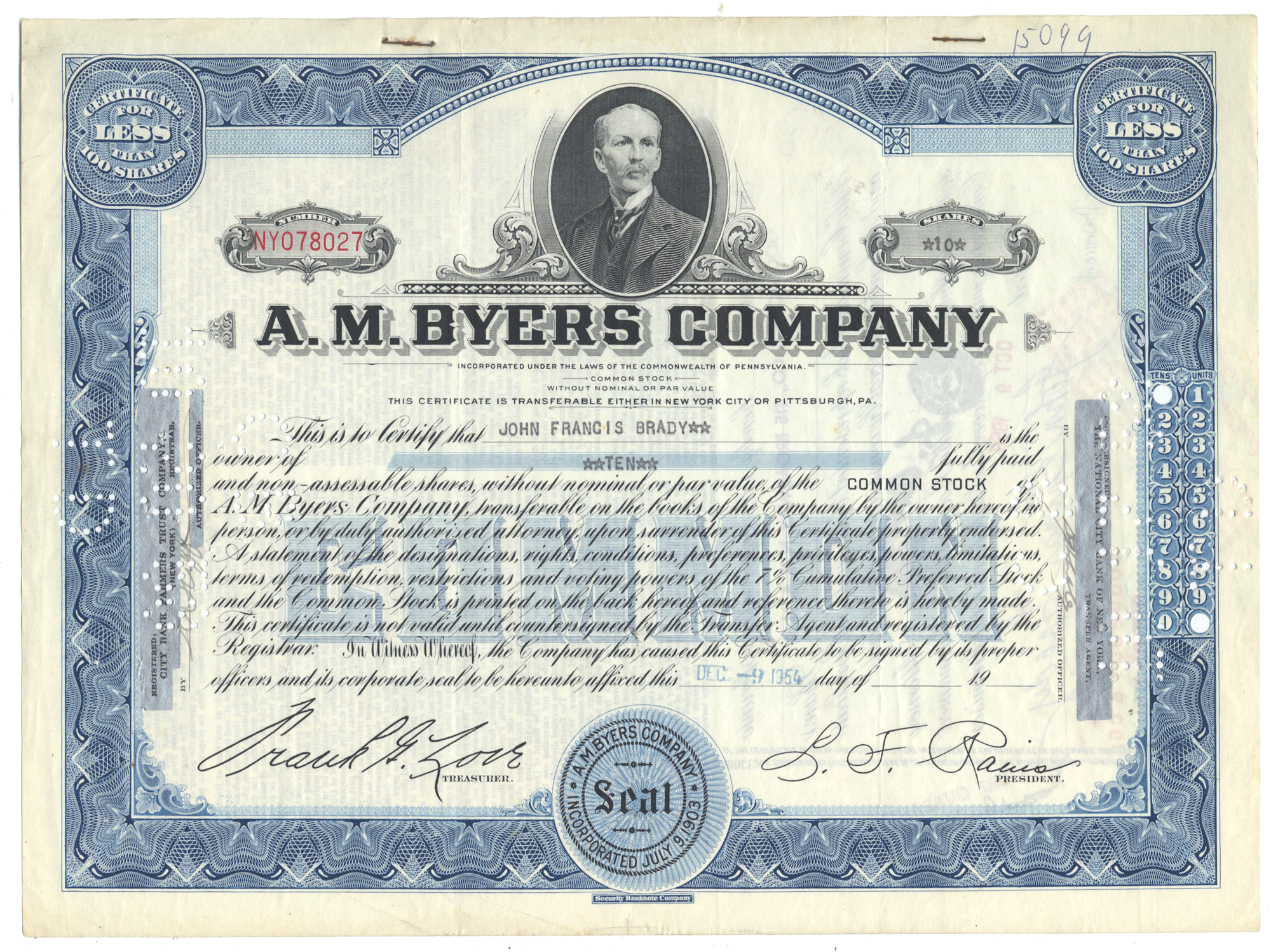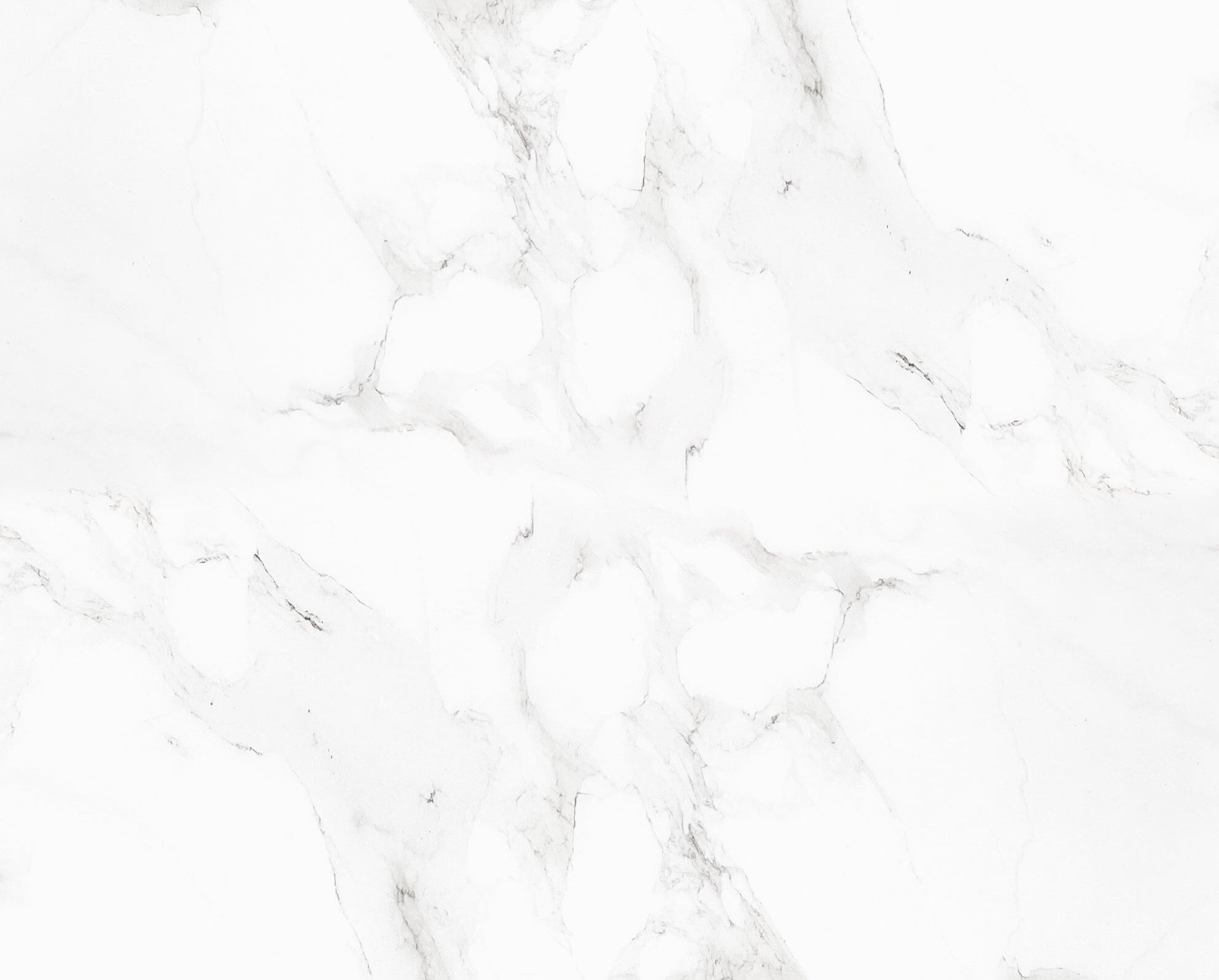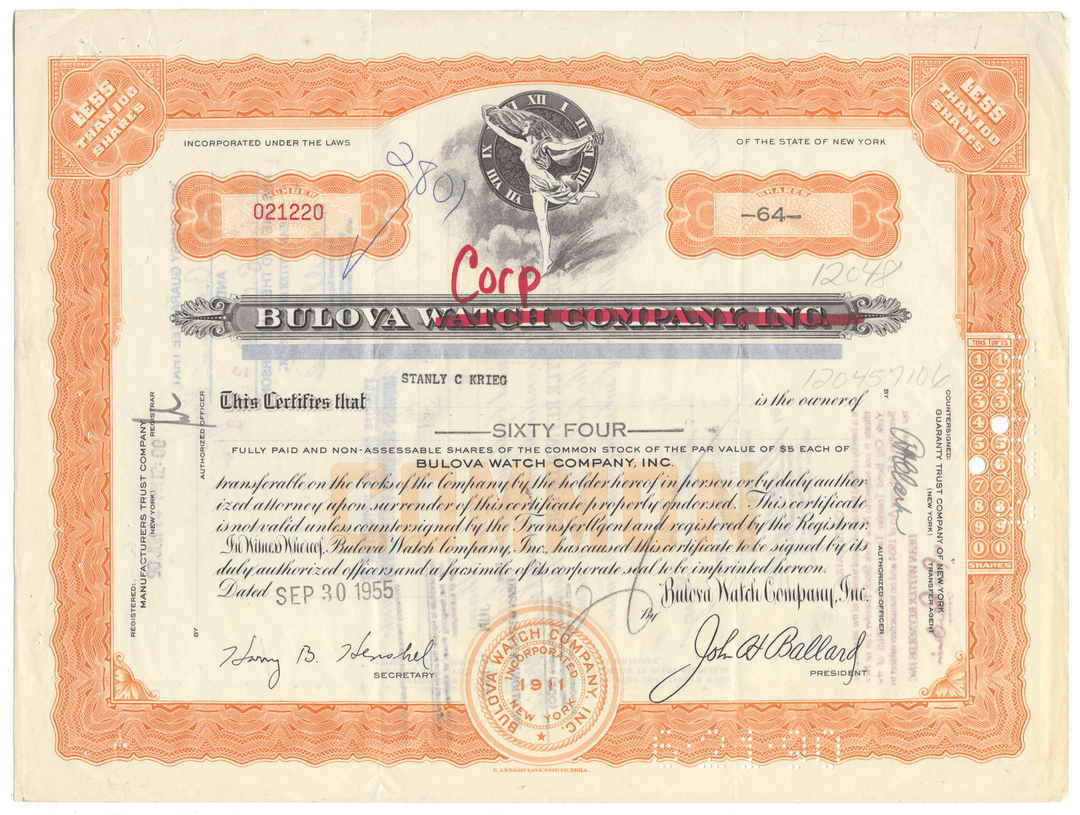
Bulova Watch Company, Inc.
- Guaranteed authentic document
- Orders over $75 ship FREE to U. S. addresses
You will receive the exact certificate pictured
Over 50 years old
Common stock
September 30, 1955
Issued, canceled
Machine printed signatures
12" (w) by 8" (h)
NA
Historical Context

Bulova was founded and incorporated as the J. Bulova Company in 1875 by Joseph Bulova, an immigrant from Bohemia. It was reincorporated under the name Bulova Watch Company in 1923, and became part of the Loews Corporation in 1979 and sold to Citizen at the end of 2007.
In 1912, Bulova launched his first plant dedicated entirely to the production of watches. Manufacturing watches at their factory in Biel (Switzerland,) Bulova began a standardized mass production never seen in the world of watchmaking until then. In 1919, Joseph Bulova offered the first complete range of watches for men. The iconic visual style of his first popular advertising made its watches popular with the American public. But beyond the original style, precision and technological research also became an endless quest for Bulova. In 1927, he set up an observatory on the roof of a skyscraper located at 580 5th Avenue in New York City to make measurements that would enable him to determine very precisely universal time.
Bulova established its operations in Woodside, New York, and Flushing, New York, where it made innovations in watchmaking, and developed a number of watchmaking tools. Its horological innovations included the Accutron watch, which used a resonating tuning fork as a means of regulating the time-keeping function.
Bulova became a renowned watch company in 1923. Bulova produced the first advertisement broadcast on radio in 1926, announcing the first beep of history: ‘At the tone, it’s eight o’clock, Bulova Watch Time’, an announcement heard by millions of Americans. In 1927, Charles A. Lindbergh was the first pilot to cross the Atlantic nonstop. His crossing earned him a Bulova Watch and a check for $1000, and it became an emblem for the brand that created the model "Lone Eagle" in his likeness. Bulova claims to have been the first manufacturer to offer electric clocks beginning in 1931, but the Warren Telechron Company began selling electric clocks in 1912, 19 years prior to Bulova. In the 1930s and 1940s, the brand was a huge success with its rectangular plated watches whose case was strongly curved to better fit the curve of the wrist.
Bulova produced the world's first official television commercial, on July 1, 1941, before a baseball game between the Brooklyn Dodgers and Philadelphia Phillies over New York station WNBT (now WNBC). The announcement, for which the company paid anywhere from $4.00 to $9.00 (reports vary,) displayed a WNBT test pattern modified to look like a clock with the hands showing the time. The Bulova logo, with the phrase "Bulova Watch Time", was shown in the lower right-hand quadrant of the test pattern while the second hand swept around the dial for one minute.
At one time in the 1940s, Bulova made a few examples of their complex four sided, five-dial per side "sports timer" game clock for use in NHL pro ice hockey games and for the nascent NBA pro basketball league of that time, used for indoor sports arenas such as Boston Garden, Chicago Stadium and the Detroit Olympia through to the last example being taken out of service in Chicago in 1976, all replaced by digital-display game timepieces.
The Joseph Bulova School of Watchmaking was founded in 1945 by Arde Bulova, Chairman of the Board, initially to provide training for disabled veterans after the Second World War. The school later became a full-fledged rehabilitation facility, an advocate for disabled people nationwide, and one of the founders of wheelchair sports in America. The school closed in 1993.
In 1967, Bulova bought the Manufacture des montres Universal Perret Frères SA at Geneva and sold it in December 1977. The factory in Biel was closed in 1983.
Related Collections
Additional Information
Certificates carry no value on any of today's financial indexes and no transfer of ownership is implied. All items offered are collectible in nature only. So, you can frame them, but you can't cash them in!
All of our pieces are original - we do not sell reproductions. If you ever find out that one of our pieces is not authentic, you may return it for a full refund of the purchase price and any associated shipping charges.


